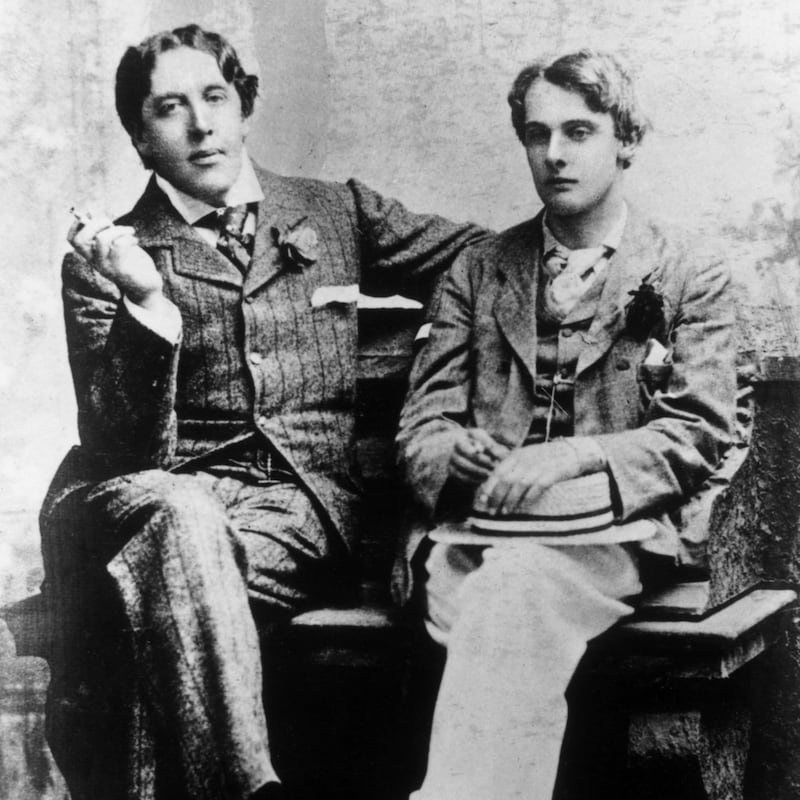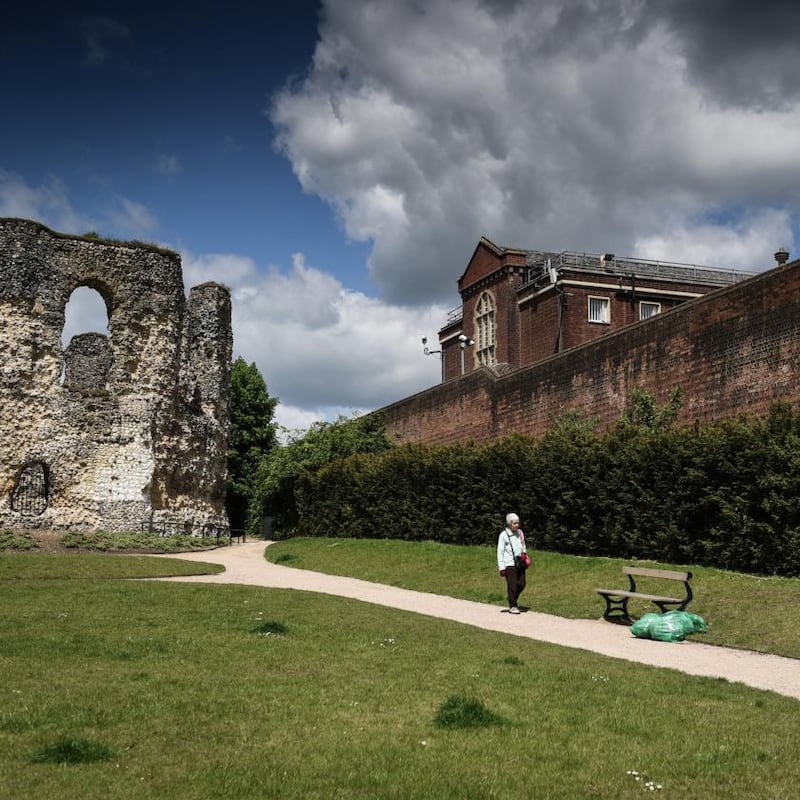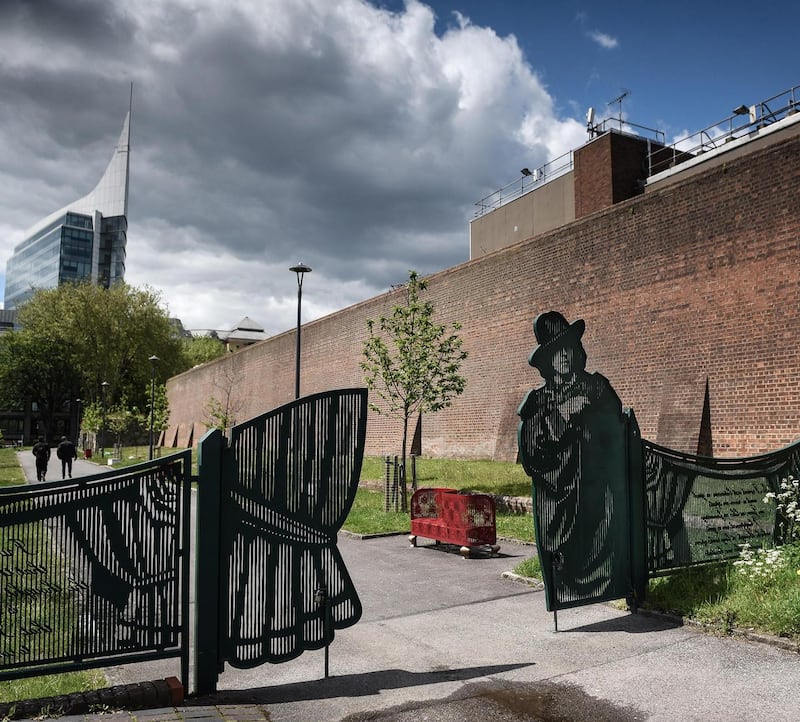The metal stairway creaks and groans underfoot on the way to cell C. 3.3, a bare oblong room of painted brick behind a large and forbidding prison door. It was here that Oscar Wilde was incarcerated for about 18 months in the late 19th century because of his homosexuality, and this was the inspiration for the Irish poet and playwright's grimly realistic portrayal of life behind bars, The Ballad of Reading Gaol.
"You feel goose bumps going in there," says Matt Rodda, one of the MPs for the English town, about 60km west of London, who compares the prison – closed on health-and-safety grounds in 2013 – to a time capsule. But few have seen the prison, which is rarely opened to the public, and moves to turn it into a public space have reached an impasse.
Several movie stars, including the Reading-born actor Kate Winslet, support plans to open the site, as, seemingly, does the street artist Banksy, one of whose murals is said to appear on one of the prison walls
Last month a £2.6 million (€3 million) bid from the town council to buy and convert the prison into a museum and arts centre was rejected as too low by the government, which owns the property. Several movie stars, including the Reading-born actor Kate Winslet, support plans to open the site, as, seemingly, does the street artist Banksy, one of whose murals is said to appear on one of the prison walls.
"It's got tremendous potential," says Karen Rowland, a local councillor with special responsibility for cultural issues, who is originally from New York and thinks the location is of importance not only as an artistic and cultural asset.
“Doubling that with LGBTQ+ interest, and having come from living right next to Stonewall in New York City, I know the value and the importance of a national heritage site for that community,” she says, referring to the Greenwich Village bar in New York credited as the starting place of the gay-rights movement.

The town of Reading proved to be an important place in the life of Wilde, a celebrated literary figure until 1895, when he was arrested at the Cadogan Hotel in London and subsequently convicted of “gross indecency”. When he was transferred from a prison in London to Reading Gaol, it was supposed to be an improvement in his conditions. But prison rules still forbade most social interaction, the food was appalling and the sanitation worse.
For an aesthete and sybarite like Wilde, incarceration was a crushing change of fortune depicted vividly in The Ballad of Reading Gaol, which he wrote after his release. It recounts the fate of an inmate who was hanged in the prison grounds:
Each narrow cell in which we dwell
Is a foul and dark latrine,
And the fetid breath of living Death
Chokes up each grated screen,
And all, but Lust, is turned to dust
In Humanity's machine
Gyles Brandreth, the writer, broadcaster and former MP who is honorary president of the Oscar Wilde Society, says the prison symbolises Wilde’s place in global literary, cultural and social history and needs to be saved. “There are not many literary figures whose life as well as their work plays a part in the national story, and indeed in the international story,” he says. “We are fascinated by his rise and by his fall, and, because of the extraordinary change in attitudes to homosexuality over the century, he also has a place in social history. What we get in Reading Gaol is that transition from triumph to tragedy.”
'I have got to make everything that has happened to me good for me,' Wilde wrote, citing his plank bed, loathsome food, hard labour and the 'dreadful dress that makes sorrow grotesque to look at, the silence, the solitude, the shame'
Wilde's situation in jail eventually improved when a new prison governor granted him access to more books and to writing paper. With that he was able to complete De Profundis, a lengthy letter to his lover Lord Alfred Douglas that included some more optimistic messages.
“I have got to make everything that has happened to me good for me,” he wrote, citing his plank bed, loathsome food, hard labour and the “dreadful dress that makes sorrow grotesque to look at, the silence, the solitude, the shame”. He added, “There is not a single degradation of the body which I must not try and make into a spiritualising of the soul.”
In that spirit, those seeking to convert the jail believe that Reading, too, can turn the suffering of its former prisoners to something beneficial to the public. Local campaigners include Toby Davies, artistic director of the Rabble Theatre, which in 2016 performed a play about the trial of Oscar Wilde in the chapel of the prison.
“It was extraordinary. It will live with me forever,” he says. “It’s a cliche, but it really does get in your blood, it is so dark and miserable – it feels like The Shawshank Redemption when you are in there. But as a result, there is something massively positive that comes out of that, that you think this is an opportunity for good.”

Reading Borough Council's bid for the site also aims to show off other aspects of the history of a town that was the burial place of King Henry I in 1136 but is arguably better known to most Britons for its big train station. Tony Page, the deputy leader of the council, says its plan would focus on arts and culture, accentuate the history of the jail – where Irish republican prisoners were also held in the early 20th century – but also draw visitors to a neighbouring site where King Henry I is buried.
The precise location of the tomb has not been identified; it might be under a car park, as happened with Richard III in Leicester. Reading Abbey was largely destroyed in the 16th century, and parts of it have been built over, though many ruins remain.
Page, of Reading council, says the UK ministry of justice, which owns the prison, appears to want about double the council’s bid for the site. That, he says, is unrealistic, because it is based on prepandemic valuations and incorrect assumptions, made in an unsuccessful private-sector bid, that planning laws would permit significant housing to be constructed on the site.
The council’s current proposal includes a much smaller amount of homebuilding and a boutique hotel, to help finance the conversion of the prison into a museum and arts centre. Given that the site is costing the government about €250,000 a year to mothball, Page is frustrated that the ministry plans to put the site back on sale rather than enter talks with him.
In a statement, the ministry says that, “following discussions with the Council, the prison will be put back on the property market. Any sale will seek the best value for taxpayers and be reinvested into the justice system, while ensuring planning requirements for the historic site are met.”

Campaigners have not given up yet, however. Rodda, the local MP, wants a meeting with the government and says he hopes that other finance, perhaps from crowdfunding, could top up the council’s bid. Like some others, he is unenthusiastic about the council’s plans to build a boutique hotel on the site of a prison where many suffered and some died. Davies, the theatre director, feels the same, although he thinks it might be a price worth paying to transform a symbol of brutal penal servitude into one of culture and opportunity.
That, he adds, would be “an extraordinarily positive message from a town that has been associated with a train station, and shopping, and not much more”. – New York Times


















